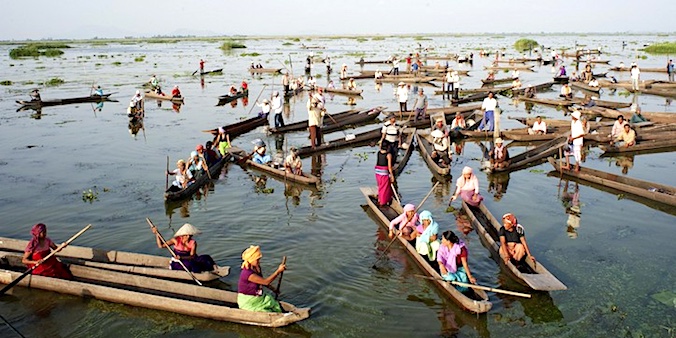ASSAM, NAGALAND and MANIPUR
Tour - 15 days
ASSAM, NAGALAND and MANIPUR
Tour - 15 days
About ASSAM, NAGALAND and MANIPUR
Assam is the only state in north-east India that is almost entirely low lying. It consists largely of the flood plains of the Brahmaputra, one of the largest untamed rivers in the world. The climate is fantastic for rice cultivation, all kinds of tropical crops, bamboo cultivation and fish farming.
Assam is relatively densely populated. The legal part of the population consists of at least 35 million people on an area of 78,000 square kilometers (similar to Czechia, a bit smaller than Austria). There are also a large number of illegal immigrants, mainly from Bangladesh.
Read more…Read lessThe name Assam comes from the same origin as Siam, which means Thailand. The larger part of the population finds its roots far to the east, from where their ancestors, the Ahums, entered the area in the 13th century. For more than 600 years the Ahums upheld a kingdom in Assam. Especially in the last two centuries the Assamese culture, language and genetics have changed due to frequent immigration from India, Nepal and later Bangladesh.
Before the Ahums settled in the Brahmaputra Plain, other peoples already lived here. The most important of these are the Bodos, who now live mainly in the north and northwest of Assam (population about 1.5 million).
Nagaland is wedged between Assam in the west and Myanmar (Burma) in the east. It is about half as large as the Netherlands and, with around 2 million inhabitants, relatively thinly populated. Nagaland is quite mountainous, the highest mountain reaching 3840m (Mt. Saramati). But most of the state is between 500 and 2000m, and thus endowed with a climate in which virtually anything will grow. The main crops are rice (especially mountain rice), corn, millet, pulses, tobacco, oilseeds such as mustard, sugarcane, potato, and bamboo.
A significant part of the population still lives of shifting cultivation. Every so many years a new piece of forest is burnt down, tilled for a number of years till the soil is exhausted, and then left for another piece of land. The government is trying to discourage this highly unsustainable form of farming, and encourage alternatives, such as orange and pineapple cultivation.
Read more…Read lessThe people of Nagaland belong to the Burmese-Tibetan ‘race,’ and probably originate from Tibet, perhaps with influx from Southeast Asia. They are believed to have settled around the year 1000 in present day Nagaland. Although the Nagas never had their own state, they have always been considered a culturally and geographically distinct entity by neighbouring countries.
One of the causes of this lack of statehood was the habit of the Naga tribes to continuously wage wars between them. In addition, the Nagas had the curious habit of head hunting. The heads and scalps were cherished as trophies and can still be seen in the villages. Contact with Christianity has eventually made them abandon the practice, but not before the early fifties. Today, almost all Nagas are Christians. The war dances of the Nagas, performed at festivals, are a major draw for tourists.
There are 18 different tribes, each with its own distinct customs, dialect and clothing. But the Nagas are united in their cultural traditions, language, customs and religion. Apart from local dialects, all Nagas speak Nagamese – a lingua franca that is a mix of Naga and Assamese.
Manipur lies south and east of Nagaland and borders Myanmar (Burma). The state is also mountainous and thinly populated. The economy is mainly agricultural, largely self-sufficient (little or no export) and also relies on hydroelectric power generation. The inhabitants belong to different groups, such as the Meitei, the Kuki, Naga, and Pangal. All these peoples speak a Sino-Tibetan language. Although Manipur has been at the crossroads between South Asia (India) and Southeast Asia for at least 2500 years, today, it is the least visited state of India (by tourists).
Read more…Read lessIn sharp contrast to Nagaland, Manipur was already about 2000 years a political entity. Before joining India in 1949, it was an independent, so-called princely state. The main ethnic group in Manipur are the Meitei (53% of the population). These are predominantly Hindu, and their language Meeteilon (Manipuri) is also the official language of the state. Within India, the state of Manipur is known for its good polo players and polo horses, but also for its traditional dances. These are considered to be part of the official classical dances of India.
Region
Assam, Nagaland & Manipur (India)
Best Time
Feb-April &
Nov-Dec
No. Of Days
15 days
Trip Character
Jeep tour with walks
Sleeping Altitude
65 - 1620 m
Price
INR XXX/ $ XXX
ABOUT THIS TOUR
On this tour we take you to India’s easternmost parts, making a round trip through the upper reaches of the Brahmaputra. Starting off at Guwahati, the capital of Assam, we travel upstream along the majestic Brahmaputra to Kaziranga National Park, home to the largest population of Indian rhinos, as well as elephants, tigers and much more.
Then we cross the Brahmaputra to Majuli Island, where we walk and bicycle through traditional villages of the Mishmi tribe and witness a unique esoteric dance performed by a community of Vaishnavite (Hindu) monks. Further east still, we reach Dibrugarh, where we stay two days at a very atmospheric nineteenth century bungalow amidst tea plantations.
Then we enter the far-eastern states of Nagaland and Manipur. Both are due outside the tourist circuits, Manipur is even India’s least visited state. That’s not because there is nothing to see. The mountains are lush green, thanks to an abundance of rain, and harbour some very fine subtropical forests and supreme mountain vistas.
Read more…Read less…
The Nagas, though once upon a time fierceful warriors and even head-hunters, are known for their hospitality. Originally adhering to animistic beliefs, these days most people of Nagaland and Manipur are Christians. In Manipur Hinduism is well established as well.
During festivals the vibrant ancient culture of the Nagas and Manipuris comes to live in war and harvest dances performed in utterly exotic and colourful costumes. Each of the 45 tribes of Nagaland and Manipur has its own different traditional wear and dances.
If your travel dates are right (roughly between mid-November and mid-December) you can visit one or two of the most colourful and well-organised festivals of the Northeast: the well-known Hornbill Festival in Kohima (Nagaland) and the much less know Sangai Festival in Imphal (Manipur). The latter is named after a rare species of marsh-dwelling deer found only in Manipur.
YOUR custom-made TRIP
The tour described here, as well as the other ones on our website, are mainly meant as suggestions. We would be happy to offer you a travel proposal that fully meets your personal demands and expectations. That means that you choose where you want to go, what level of accommodation and type of transport you want and what activities you prefer.
Please let yourself be inspired by this and other trips on our website and then drop us a line (or call us) to explain your travel wishes. We will be happy to help you put together the perfect trip. You can reach us over e-mail, Messenger, Whatsapp or mobile phone.
EXTENSIONS & VARIATIONS
Apart from the tour as described here, you could consider the following add-ons and changes:
- There are cultural festivals in Assam, Nagaland and Manipur that take place during the autumn and winter months. Among the best known are the Hornbill Festival in Kohima (Nagaland, December 1 -10) and the Sangay Festival in in Imphal (Manipur, November 21-30). If your travel dates are close to these dates we can work out an itinerary in which you’ll be able to attend one or both of these festivals.
- If you’re wild about wildlife one or several extra days at Kaziranga are recommended. There is a lot to see in the six different ranges, and the longer you stay, the better your chances of seeing some of the more elusive species.
- The roads to Mon and Longwa are generally quite bad, and the drive is long. To make the time investment and ‘suffering’ more worthwhile, it makes sense to stay longer in this area. Staying two nights (one full day) extra at Longwa is highly recommended.
ITINERARY
-
Day 1: Delhi ✈︎ Guwahati
You will be received at Guwahati airport by our guide and driver. After lunch you can visit the Kamakhya Temple, dedicated to the Mother Goddess, as well as a small 17th century Shiva temple on an island in the Brahmaputra. Altitude 65m. -
Day 2: Guwahati - Kaziranga (4-5 hours drive)
A 5 h drive will take you eastwards to Kaziranga National Park. After lunch you’ll do your first jeep safari in the park, accompanied by a specialised naturalist. Kaziranga is one of the largest national parks of India. It houses the Indian ‘big five’ Rhino, Tiger, Leopard, Buffalo and Elephant, and an immense variety of bird species.Altitude 65 → 80m. -
Day 3: In Kaziranga
Today you will be having 2 jeep safaris inside different ranges of the park again with the expert naturalist. Each range has its own different landscape and chances of seeing particular animals. Altitude 80m. -
Day 4: Kaziranga - Majuli Island (3 h; 1.5 h ferry)
Today we driver further east and then up to he banks of the Brahmaputra River. We sail for 1.5 hours to Majuli Island, one of the largest inhabited river islands in the world. Look out for rare Ganges dolphins! On Majuli Island we stay in rustic but clean cottages made in the style of the local Mishing tribe. Altitude 65 → 65m. -
Day 5: On Majuli Island
Majuli is a paradise for water birds, but it is best known for its Satras. These are kibbutz-like monasteries where Hindu monks who belong to Vaishnavism live. We will witness monks performing dances, which have acquired UNESCO World Heritage status. You can also go on a very enjoyable bicycle trip, riding over small dikes and passing through many small Mishing villages. -
Day 6: Majuli - Sibsagar - Dibrugarh (2 h ferry, 4-5 h drive
Today early morning, take the ferry back to Neemati ghat taking a longer time than before as sailing against the current. Our destination is Dibrugarh, one of the most prominent city of upper Assam by the Brahmaputra, visiting enroute historic Sivsagar. Sivsagar was the capital of the mighty Ahom dynasty who had migrated from Burma in 1228 and continued their domination in undivided Assam till 1826. You visit some excellent architectural marvels there constructed by them in the 16th and 17th century. Altitude 65 → 110m. -
Day 7: In Dibrugarh
Today you either explore the tea garden near Mancotta Tea bungalow and see the process of getting the real tea in the factory or visit a mesmerizing Thai village Namphake having a beautiful buddhist monastery roughly 50 kms away from Dibrugarh. The villagers of Nampahke can speak Tai Ahom dialect, an already disintegrated dialect like Greek & Latin. Altitude 110m. -
Day 8: Dibrugarh - Mon (6 h)
Today you drive towards Mon in Nagaland. After a brief entry formality in the state border, you enter Nagaland and drive through beautiful lush green vallies but with bumpy roads. Altitude 110 → 650m. -
Day 9: Mon - Longwa - Mon (3 - 4 h)
Today you'll visit the attractive village of Longwa, right on the Indo-Burmese border. It is inhabited by the colourful Konyak tribe. Altitude 650 → 1400 → 650m. -
Day 10: Mon - Dimapur (7 -8 h)
Today you return to the Brahmaputra plain and set of to Dimapur, the commercial capital of Nagaland. On the way to Dimapur you partially cross Karbi Anglong, the home of the Karbi tribe. Dimapur once was the capital of the powerful Kachari kingdom. Altitude 650 → 145m. -
Day 11: Dimapur - Khonoma
As soon as you get out of Dimapur, the road will start to climb. In steep hairpin bends it goes up along wooded slopes. Farmers along the road sell delicious oranges and (peeled) pineapple. Before you reach Kohima, the capital of Nagaland, you turn to the right and enter the beautiful high valley of Khonoma. Altitude 145 → 1620m. -
Day 12: in Khonoma/ attending the Hornbill Festival
If you are in Khonoma during the first ten days of December, today we’ll take you to the spectacular Hornbill Festival. Else, you can explore the village of Khonoma and its green surroundings, walking the streets, and interacting with the locals. The Angami tribal people who inhabit Khonoma were great warriors who even fought the British to protect their land from annexation. Altitude 1620m. -
Day 13: Khonoma - Imphal (4 h)
Today we drive to Imphal, the capital of Manipur. On the way we stop at Kohima, Nagaland's capital, to visit the interesting Mothers Market and the well appointed war museum. Altitude 1620 → 785m. -
Day 14: In Imphal
Today you have all day to explore Imphal’s surroundings, such as Loktak Lake which is two hours drive from Imphal. Altitude 785m. -
Day 15: Imphal ✈︎ Delhi
Today you fly back to Delhi. It depends on the timing of your international flight whether you will need an overnight stay in Delhi. In the latter case we can arrange this for you. Altitude 215m.
HIGHLIGHTS OF THIS TOUR
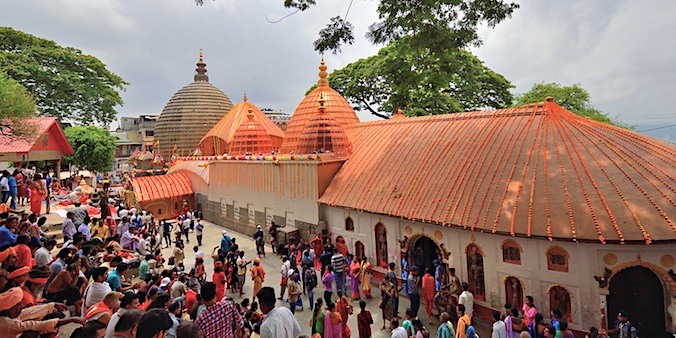
Guwahati
Kaziranga National Park
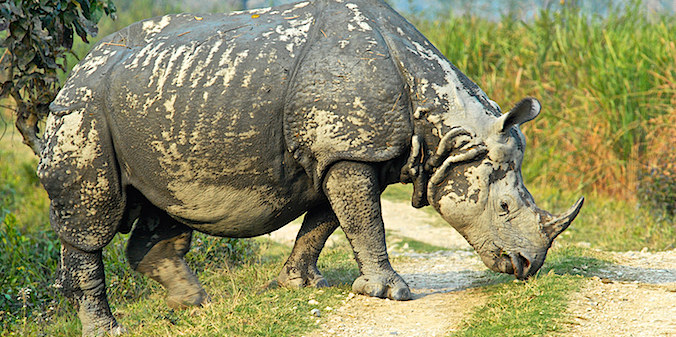
Brahmaputra CROSSING
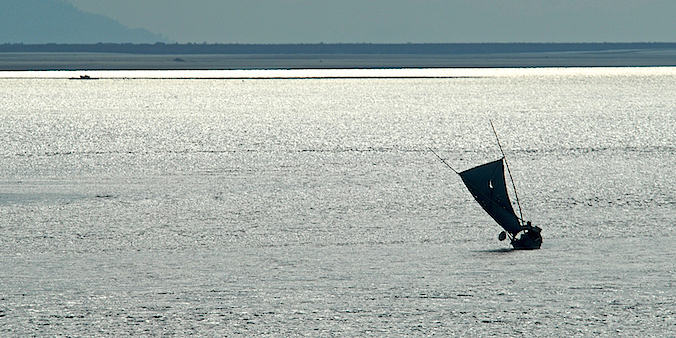
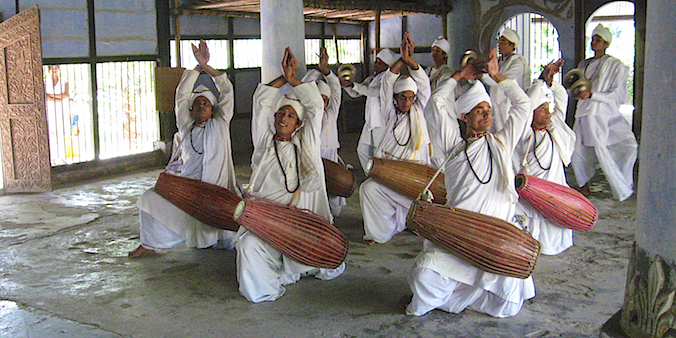
Satras of Majuli island
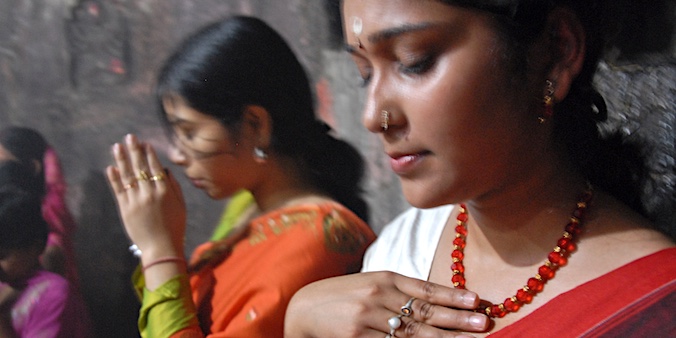
Sibsagar
ANCIENT TEA BUNGALOWS
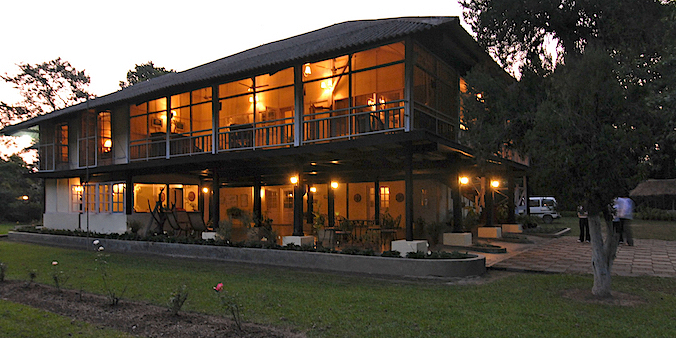
Tea Gardens of Assam
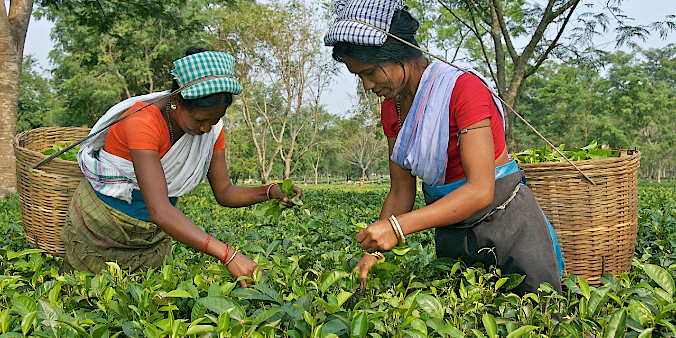
The Naga Culture
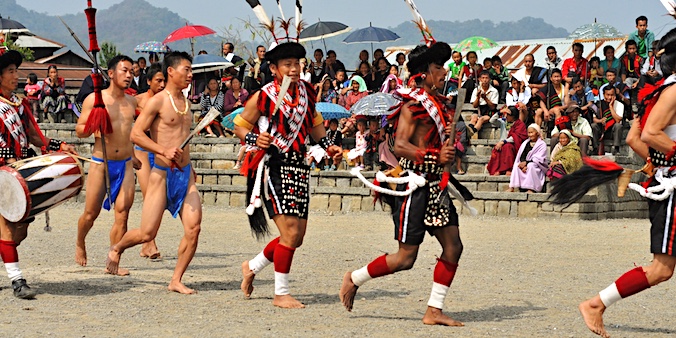
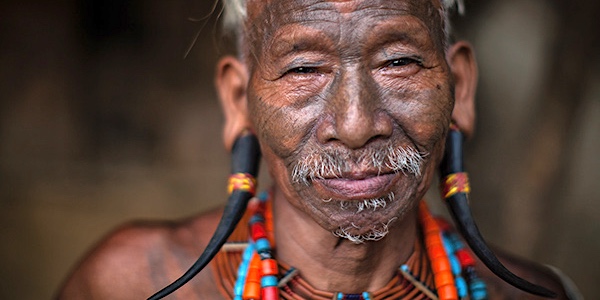
The Nagas of Longwa
The Mithun
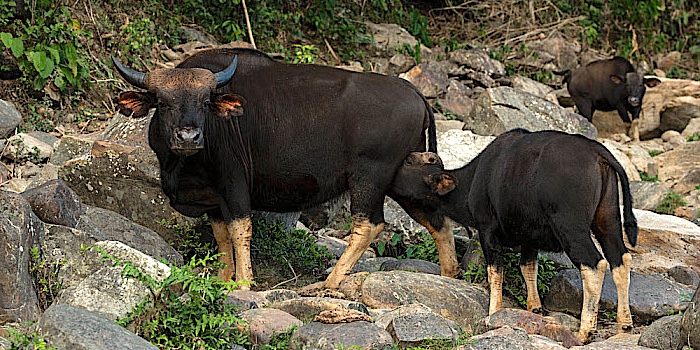
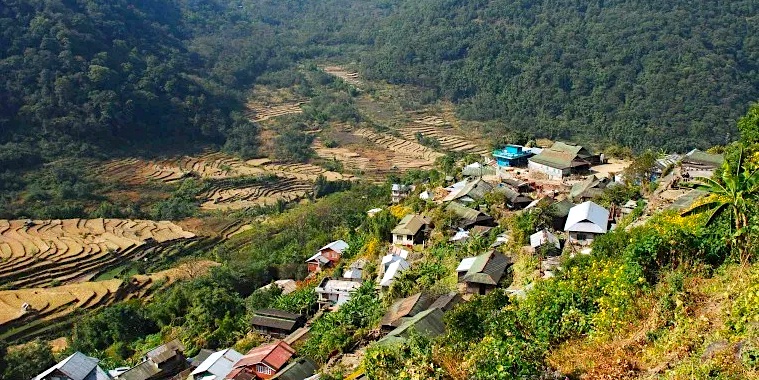
Khonoma
HORNBILL FESTIVAL
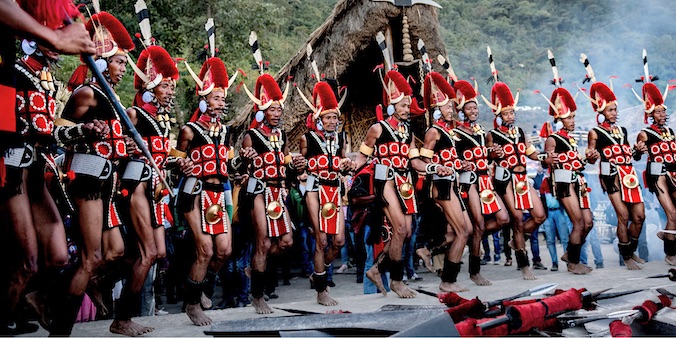
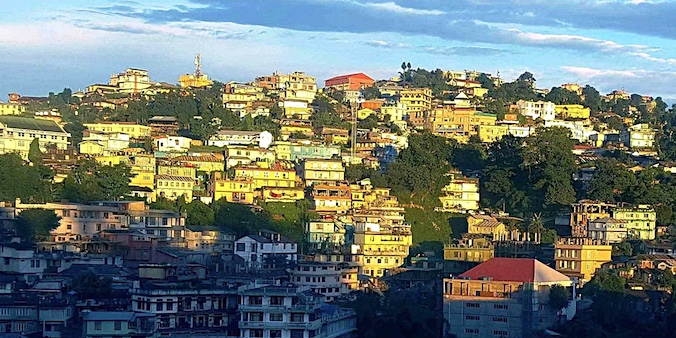
Kohima
Manipur Culture
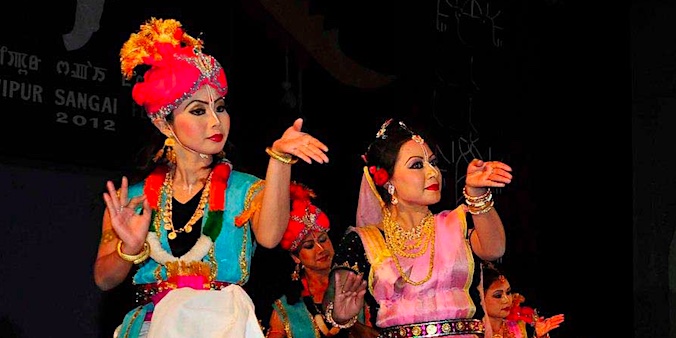
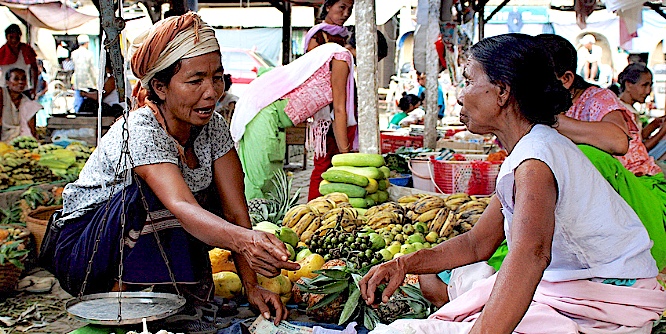
Imphal
Loktak Lake
